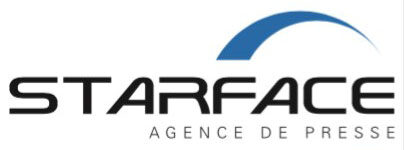Tuesday, May 25, 2010, the Commercial Court of Paris pronounced the liquidation of the Corbis Sygma corporation. Counselor Gorrias had been appointed liquidator and had taken over the wreckage of the press agency created by Hubert Henrotte in 1973 and then bought by Bill Gates in 1999. Nine month later, millions of photographs were in jeopardy of destruction…Until all of a sudden 736 rolls of film from the mythical photographer from Gamma Agency reappear in the courts!
In order to fully understand this surprising affair, a bit of history is needed. By the end of the 20th century what was called “the contents” appeared to have turned into a capital stake for the development of any good case concerning the internet. The game plan of the financial backer is to buy the “contents” in order to digitalize them and then put them “online”.
The classic press photo agencies –Gamma, Sygma, Sipa, Rapho and many others around the world – whose operation is based on the production of film and prints has been drowned by the action of the overwhelming new technologies.
After receiving capital from high risk investment trusts, they were left no choice but to sell their historic collections.
In 1999, the prestigious Sygma Agency, born from the split of the partners of Gamma Agency, was purchased by Corbis, a company created in 1989 by Bill Gates in order to build an immense collection of images. The American company invested tens of millions of dollars with the aim of digitalizing the “Sygma Collection”. 50 million Euros, according to Franck Perrier, Managing Director from 2000 to 2003. But much more if we recall that a real effort in terms of employees was made up until 2007 in order to professionally edit the stories to digitalize.
We can also add some zeros to the final check if we take into account the innumerable lawsuits filed by photographers for images lost, and some other –more or less- good reasons. This last argument was used in May 2010 as a cover-up for Corbis Corporation to organize a tidy liquidation of the Corbis-Sygma corporation just before the Ascension Day weekend.
It must be stated that the Sygma Agency photo archives were made up of different elements. On the one hand, we find the collection of photographs from different reporters that had been contributing for more than 30 years, putting the agency at the top of the journalistic photography distribution. On the other hand, there were thousands of photographers (around 8,000) who were also part of this success, participating for over 30 years with their stories from all corners of the world. And all of this is kept in a bunker in Normandy.
There is no doubt that most of these photographers were not aware of the tragic destiny of Sygma. The story did not make the cover of the Patagonian newspapers nor the Philippine Islands. Some photographers or their beneficiaries do not realize these circumstances even today.
Marianne Caron, President of the Gilles Caron Foundation, thought for example that she had recovered from Sygma her husband’s negatives during the 1990s, and Hubert Henrotte believed he had returned all of the photographer’s material. “I have no information on this particular topic” said Dan Perlet.
In the end, the Sygma archive is also comprised of photographs acquired from over the years: photographer archives such as the Spitzer and Fournier collections, stocks from agencies such as Eurosport, Kipa, TempSport. And let us not forget a small bit of the Reporters Associés Agency collection and, last but not least, the collection from the APIS agency, with over 50,000 rolls of film.
50 million photographs and 736 rolls of film
And it’s there, in the APIS agency archive (Parisian agency of social information), where 736 rolls of film remained for many years, shot in less than two years by Gilles Caron, gone too soon in April 1970 on the N1 Roadway between Cambodia and Vietnam.
In 1964, after finishing his studies and military service, Gilles Caron enters APIS as an intern, assisting Patrice Molinard, a fashion and advertising photographer. He would then be part of the agency in 1965, mixing movie shoots, show premieres, political meetings, council of ministers and other Parisian events.
It was an occasion to take pictures in bulk, of, among others: Alain Resnais, Brigitte Bardo, Jeanne Moreau, Belmondo, Gilbert Becaud, Aznavour etc. At that time, he also makes the cover of the newspaper France-Soir with Marcel Leroy-Finville (imprisonned for the kidnapping and murder of the leader of the Moroccan opposition Ben Barka) during his walk to the “Prison de la Sante”. He also shot simple contemporary photo stories.
He leaves APIS in may 1966 to begin working for several months for Giancarlo Botti‘s fashion agency Photographic Service. There he develops a deep acquaintance with Raymond Depardon, who was then working in the Delmas Agency, and in December of 1966 he joins the young Gamma agency founded on October 14th by a group of photographers that Hubert Henrotte would manage with master’s hands.
Last January, Marianne Caron learned about the existence of an APIS archive ‘in liquidation’ at Corbis-Sygma Agency. In extremis, she writes a registered letter to Counselor Gorrias, judiciary liquidator, to ask for a list of photographs and contact sheets. “He replied that there was no list” says Counselor Joffre, counsel for the Gilles Caron Foundation. “We have therefore approached the bankruptcy judge with a claim in the commercial courts in Paris”.
The morning of Tuesday, February 15th, Marianne Caron, Louis Bachelot –Director of the Gilles Caron Foundation- and their lawyers presented themselves before the bankruptcy judge. Veronique Manier, Counselor Gorrias’ aide, handed them a letter dated February 7th by which Marianne Caron was informed that there was in fact a list of rolls of films! These 736 rolls belonging to the photographer were in a box in one of the 7 kilometer-long rows of archive shelves given to the company Loquafrance in their warehouse in Dreux, Normandie.
The bankruptcy judge allowed the parties 6 weeks for the beneficiaries to recover the films and contact sheets that would be given to Stephan Biberfeld, Corbis-Sygma’s Manager. “I am very happy to recover these rolls of film”. “We’re talking about at least a quarter of Gilles’ production” adds Louis Bachelot “It’s his early work and it’s very important to understand it”.
An odd filing for bankruptcy
If everyone in the world of photography could not be happier to learn that – save for any last minute tricks – the Gilles Caron Foundation could soon exhibit the never before seen images by Gilles Caron, then we can only be shocked by the turn of events since the decision of the liquidation of Corbis-Sygma, signed last May 10.
From 2000 to 2007, the Seattle-based Corbis Corporation (with its corporate headquarters in Nevada) would finance a branch, Corbis France, that would coordinate Corbis-Sygma’s operation… There are picture editors to be paid for their work in sorting out this collection that reaches roughly twenty –thirty?- million negatives. No complete inventory has ever been made, and there is a whole part of this collection where there is only cardboard files and notebooks.
According to Dan Perlet, Global Director of Communications de Corbis: « The Sygma Access and Preservation Facility holds about 50 million photographic elements. About 75% of those are maintained by Corbis Corporation (photographers who signed a contract with Corbis Corporation), and the liquidator is in charge of the remaining 25% (photographers who did not sign a contract with Corbis Corporation and are represented by Sygma). I do not have specific information on the number of photographers ».
Over time, around 800 photographers would be identified by Corbis as having produced the best material. To those, Corbis would propose contracts with the parent company, Corbis Corporation. Contracts under American Law, that would allow the company to pay all picture copyrights in dollars and with no payroll taxes.
Therefore, photographs taken and published in France would be paid overriding the French laws! These contracts will expire in 2014… Their beneficiaries worry about the future, especially since Corbis-Sygma’s petition to file for bankruptcy and the managing of sales from London, inexplicably their payments have been reduced from 30% to 50%.
And then, beginning in 2007, there was a change in the company, in preparation for an important fall in the market. The management in Seattle decides to stop the production and to undertake the firing of employees to streamline the European branches. The picture editors are fired, then the vendors… It is a downward spiral that will lead to bankruptcy!
After a filing for bankruptcy, there was a protocol of agreement between the liquidator and the company in bankruptcy. Given that Corbis-France owed money to Corbis-Sygma, it seemed evident that Counselor Gorrias had things under control. He worked out that Corbis “pays everything!” On this past February 8th, in the waiting area of the commercial courts, he assured me that “Corbis made a check of 4 million euros, accounting for all of the money owed.”
And who pays for the archiving of these 7 kilometers of photos? “Corbis!” he says, “for a sum of 100,000 euros. But it cannot last. The state is not interested, the Fondation de France neither, and I don’t have another offer for the taking over of these archives except a museum that wouldn’t mind recuperating a few glass sheets fallen from the public domain. I will be obliged to destroy everything,” he states, with his habitual smile.
The information is not unsurprising. What he is trying to play, this sympathetic liquidator? Last November, the same Counselor Gorrias was speaking to me about an auction. No one will be interested in this historic archive? Contacted by phone, François Lochon, owner of Gamma-Rapho replies, “Of course my lawyer contacted Counselor Gorrias. He told us he had nothing to sell!” In regards to Abaca press, an agency created in 1995 – thus having no archives of the 20th century – Jean-Michel Psaila in New York, is more prudent, “We were in contact… nothing more.” The mystery remains. “It is a game of liars”, comments someone close to the bankruptcy arena.
No one today knows what this historic archive will become, and the concern is gaining on photographers who are even currently under contract with Corbis Corporation and who normally are not concerned. It seems that at Corbis, there is no longer a veritable editorial politic aside from profitability. The word going around is that they may want to eliminate from the database all of the old images that are not selling or not selling enough! A financial expertise yes, but far from a journalistic expertise. We know that a photo that is not worth anything one day could be worth a fortune the next day, depending on the current events.
According to this game, at the start of the year, several tens of thousands of images have suddenly disappeared from our screens. The clean-up having been operated under the critieria of the numbering system of the ex-agency Sygma! For example, many hundreds of photographs from Vietnam, signed Christian Simonpietri, had disappeared, and then reappeared a few days later. It is at the very least what I could personally contest in going through the database for several days while working on an article for the exhibition of Henri Huet at the Maison European de la Photography!
And in regards to the millions of photographs made by several thousand photographers that are still being stored in Loquafrance in Dreux, Normandy, they technically now have only one owner, Counselor Gorrias. Yet, curiously the confession of the liquidator himself and that of Corbis, is that it is Corbis-France who is still paying the global invoice for the kilometers of shelves that hold the wandering photos, photos that are under an American contract, “salvaged” photos and masterpieces.
The situation, simply confusing in and of itself, contains all of the dangers and risks of countless works that illustrate 50 years of the History of our world.
Dernière révision le 2024/01/02 a 6:56
- « The Stringer »
« Trang Bang, j’ai toujours l’impression que c’est arrivé hier » par David Burnett - 19 décembre 2025 - « The Stringer »
L’enfer est pavé de bonnes intentions,
mais ça reste l’enfer ! - 4 décembre 2025 - Patrimoine photographique de Sygma
Un jugement hors du bon sens,
enterre un scandale ! - 28 novembre 2025








